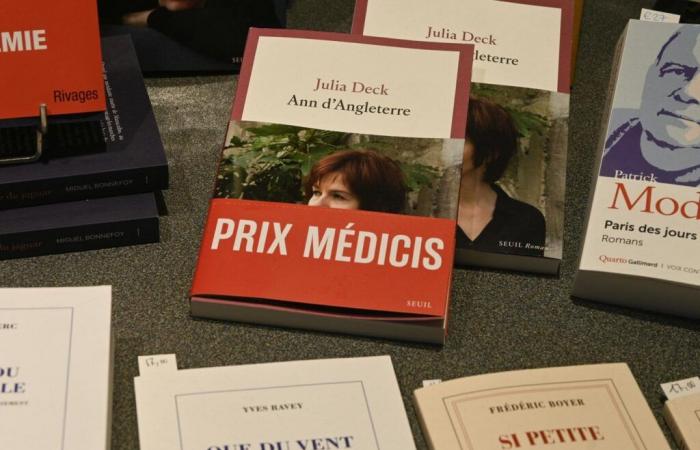The Goncourt prize for high school students was awarded Thursday, November 28 to Sandrine Collette for her book Madelaine before Dawnannounced from Rennes the jury representing around fifty high schools from across France. This new nomination adds to the very thin ranks of women winners of a French-speaking literary prize. In 2024, there are only three: Sandrine Collette, Julia Deck (Medici Prize) and Phœbe Hadjimarkos Clarke (Inter Book Prize).
A decline compared to the previous two years, when four authors were awarded prizes. These figures, although low, are far from exceptional. In the prize list of the Goncourt prize created in 1903, as in that of the other major prizes that have emerged since, women represent only 18% of the winners.
The Goncourt prize for high school students, however, stands out by having rewarded 38% of female authors since its creation in 1988. In contrast, the Goncourt prize remains the most unequal. In 120 years of existence, only 13 women have been crowned, or barely 10% of the winners.
An inequality that persists
These major literary prizes, sometimes centuries old, were born at a time when the under-representation of women in the literary world went unnoticed. The number of female writers was also lower. But even with the appearance of new distinctions such as the Médicis prize in 1958, the Goncourt des lycéens in 1988, or the Elle prize in 1970, the trend remains.
Thus, over the last 25 years, the 12 major literary prizes have only awarded 72 women, compared to 228 men. Parity has only been achieved once, in 2013. However, there is no longer a shortage of female authors: during the literary seasons of the last four years, 43% of published novels were by women. The number of awards awarded therefore does not correspond to their number in the literary world.
This observation of inequality is not limited to the results of the prizes: the juries themselves are far from parity. Apart from those for the Femina and Elle awards, which are exclusively composed of women, the other juries are predominantly male. In 2024, only one in four women would sit on the juries of major literary prizes.
No parity in juries
Some prizes, such as the Interallié, are even well below this average, not counting any women on the jury.
Even for the Femina Prize, whose jury is composed exclusively of women, the list of winners does not reach parity, with only a third of winners (34%). However, this prize was created in 1904 in order to constitute a counter-proposal to the Goncourt prize, deemed misogynistic by a collective of around twenty female journalists. The prize Elle displays an even lower score, with 31% of distinguished authors.
The under-representation of women in the literary world does not stop at the French borders. For the Nobel Prize in Literature, for example, they represent only 17 winners out of the 123 prizes awarded since 1901.






